I found a lovely looking Stowasser tárogató for sale rather cheap, and decided to go ahead and buy it, thinking to compare it to the one I already had and to keep one and sell the other. When it arrived, I was flabbergasted to find out that the instrument was in B natural. I had no idea such beasts existed, but here was one in front of me. After getting over my annoyance, I realized that this was not actually a bad thing. I now have a set of three tárogatók by Stowasser, in Bb, B and C! 🙂
The instrument is unique in several ways, apart from being in such a strange key. I’ll explain with photographs:
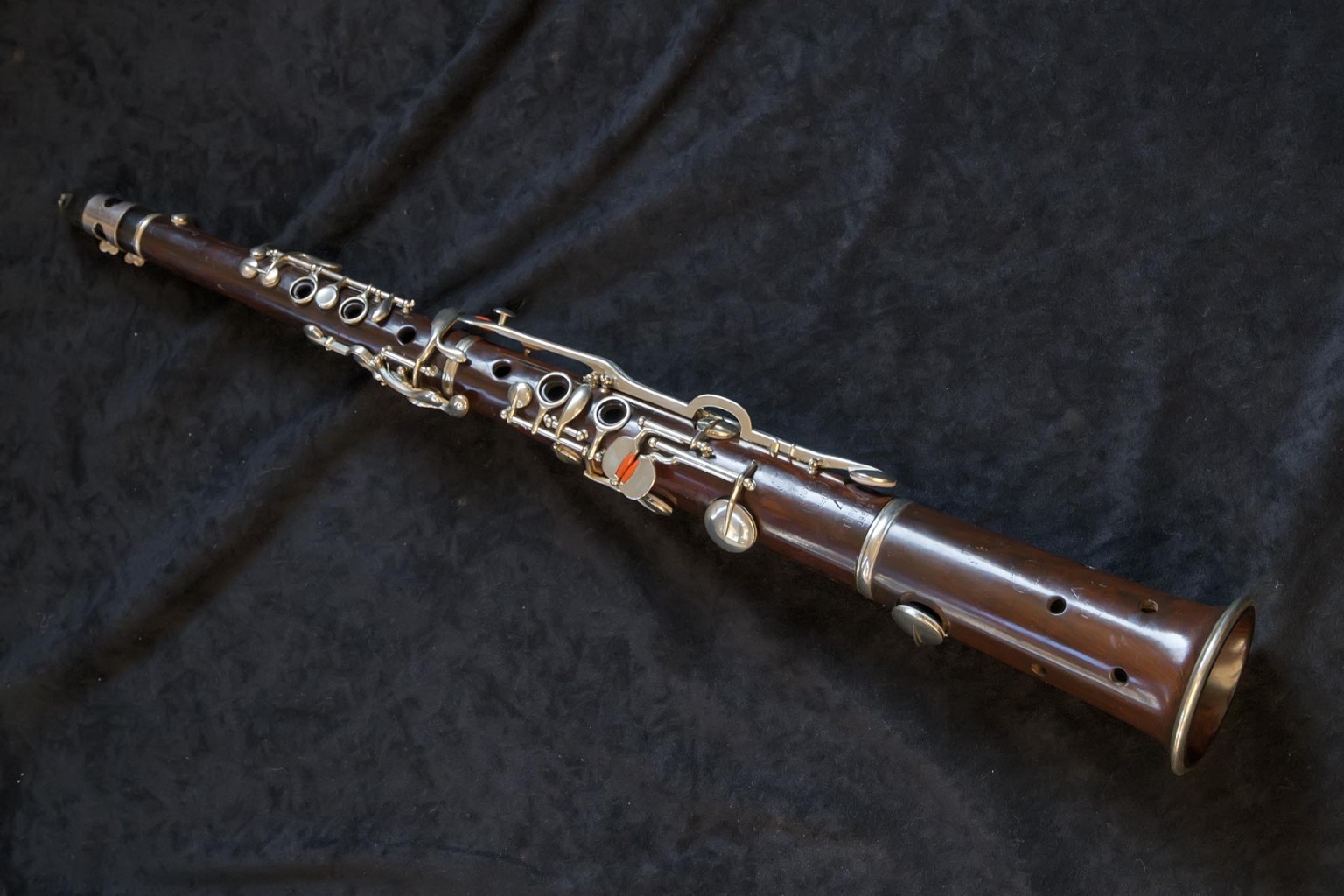 Here is the instrument. When I first picked it up something felt strange. It was too smooth. The keys were too shiny. Stowasser did lacquer their instruments, but the lacquer was clear and the coat was very thin. The keys were always matte. This was clearly a Stowasser instrument, but it was obvious that at some point in its long life both the wood and the keys had been highly polished, and a rather thick coat of tinted lacquer had been applied. But everything about the instrument is in beautiful shape, and it plays excellently.
Here is the instrument. When I first picked it up something felt strange. It was too smooth. The keys were too shiny. Stowasser did lacquer their instruments, but the lacquer was clear and the coat was very thin. The keys were always matte. This was clearly a Stowasser instrument, but it was obvious that at some point in its long life both the wood and the keys had been highly polished, and a rather thick coat of tinted lacquer had been applied. But everything about the instrument is in beautiful shape, and it plays excellently.
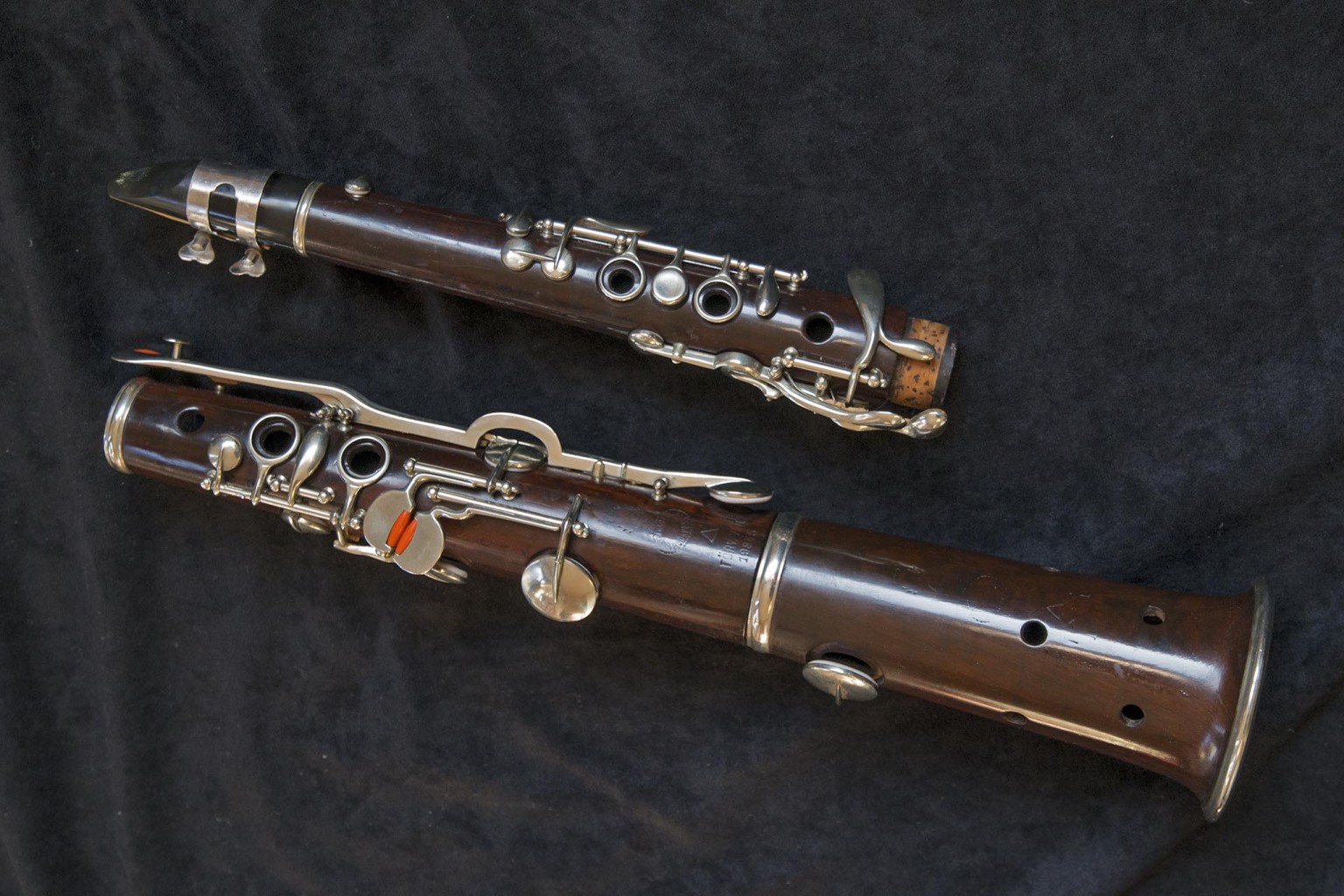 Another shot of the whole instrument. You can see that the Stowasser logos are present, but very faint due to the buffing of the wood.
Another shot of the whole instrument. You can see that the Stowasser logos are present, but very faint due to the buffing of the wood.
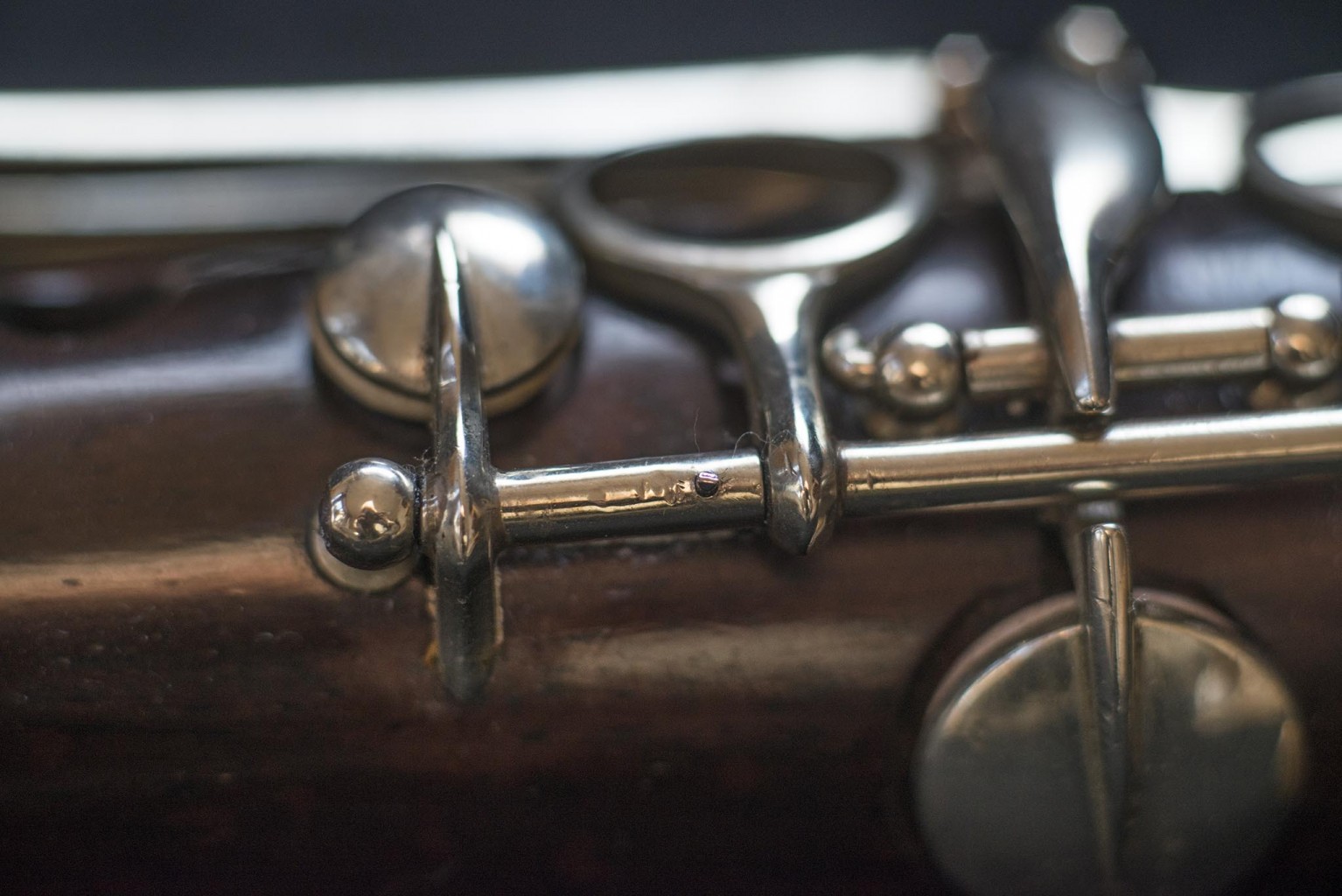 Shiny keys and shiny wood, and the first interesting thing to note: Look at the small key between the top finger hole and the second hole with the ring. Now look down to the axle connecting that key with the ring key next to it. Note that the axle has been cut just to the left of the ring key and that there is a pin in the axle just above that. This is an excellent modification that allows the fork F fingering to be played without depressing the Eb key with the pinky, because it allows the resonance F key to lift when the middle finger is lifted. On almost all tárogatók, this axle is unitary. It’s a great idea, and I don’t know why Stowasser didn’t adopt it, but this customization and the polishing indicate that this instrument must have been prized.
Shiny keys and shiny wood, and the first interesting thing to note: Look at the small key between the top finger hole and the second hole with the ring. Now look down to the axle connecting that key with the ring key next to it. Note that the axle has been cut just to the left of the ring key and that there is a pin in the axle just above that. This is an excellent modification that allows the fork F fingering to be played without depressing the Eb key with the pinky, because it allows the resonance F key to lift when the middle finger is lifted. On almost all tárogatók, this axle is unitary. It’s a great idea, and I don’t know why Stowasser didn’t adopt it, but this customization and the polishing indicate that this instrument must have been prized.
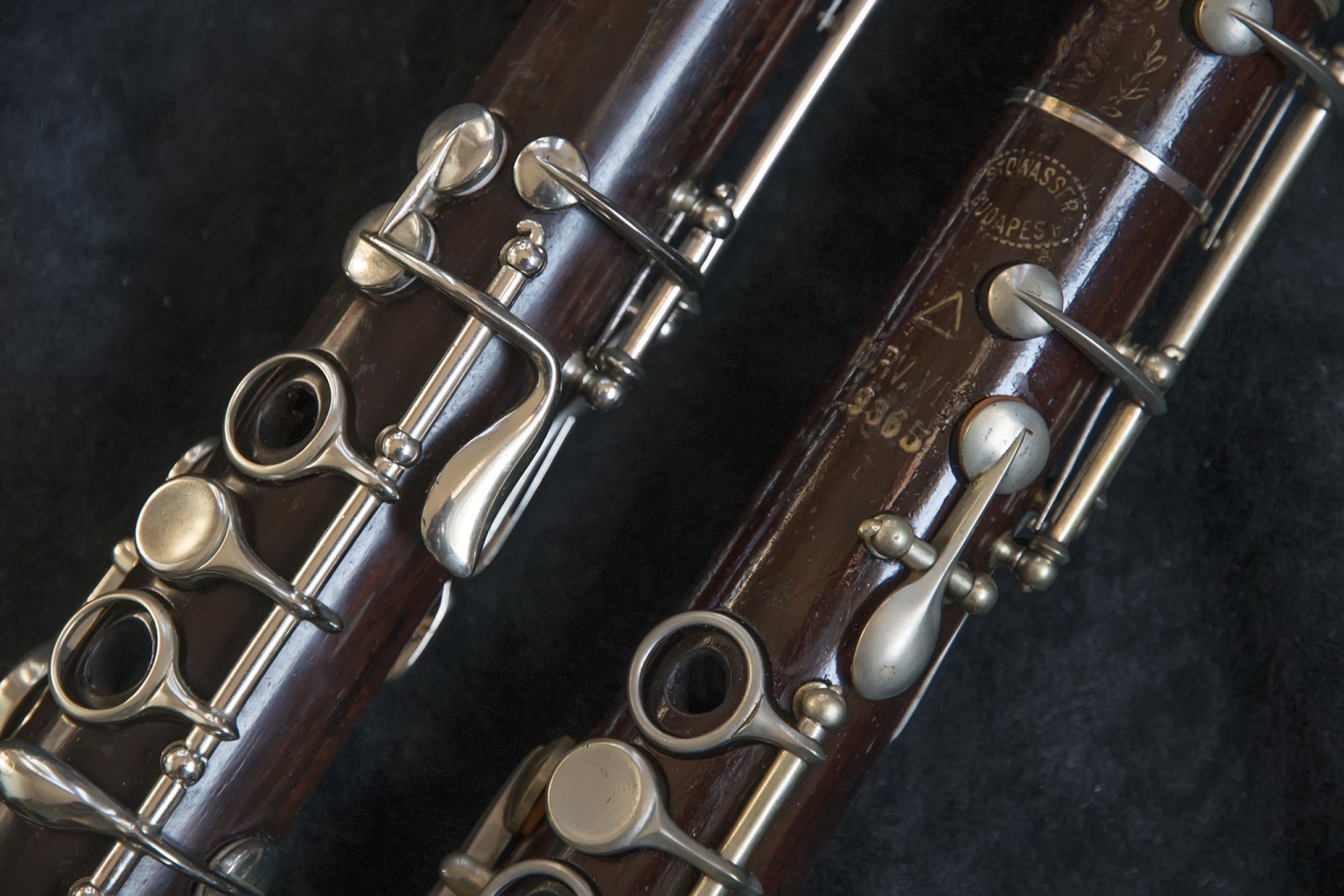 Now here’s the strangest thing: look at that this Eb trill key. Normally it is independent, as can be seen on the instrument on the right. But here is is very nicely put on an extended axle.
Now here’s the strangest thing: look at that this Eb trill key. Normally it is independent, as can be seen on the instrument on the right. But here is is very nicely put on an extended axle.
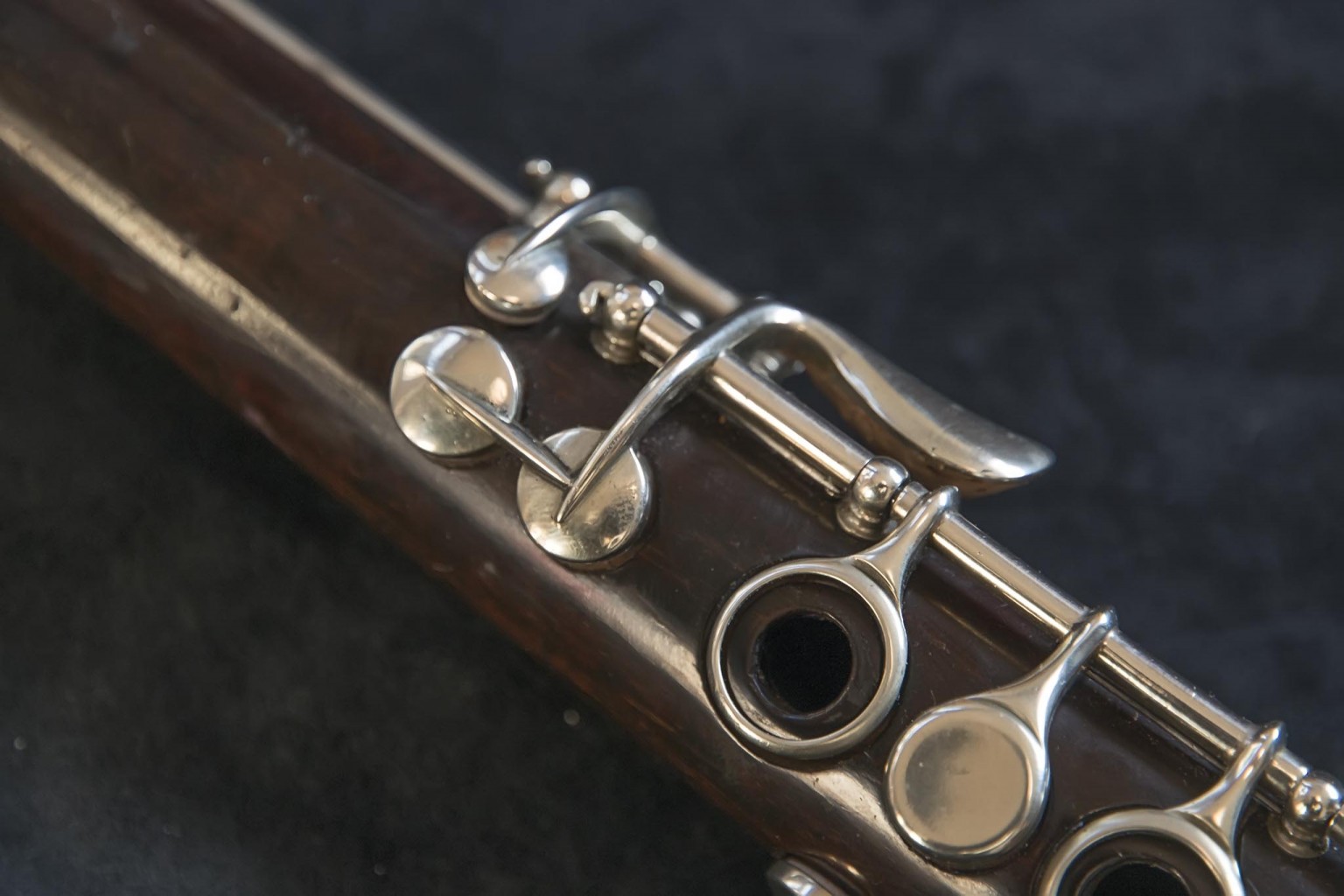 Not only that–I have seen that arrangement on one other Stowasser–but look at the pad cup arrangement here: two cups on one key, set at right angles to each other. I have no idea what this was about, but obviously the Stowasser factory was open to improvisation…
Not only that–I have seen that arrangement on one other Stowasser–but look at the pad cup arrangement here: two cups on one key, set at right angles to each other. I have no idea what this was about, but obviously the Stowasser factory was open to improvisation…
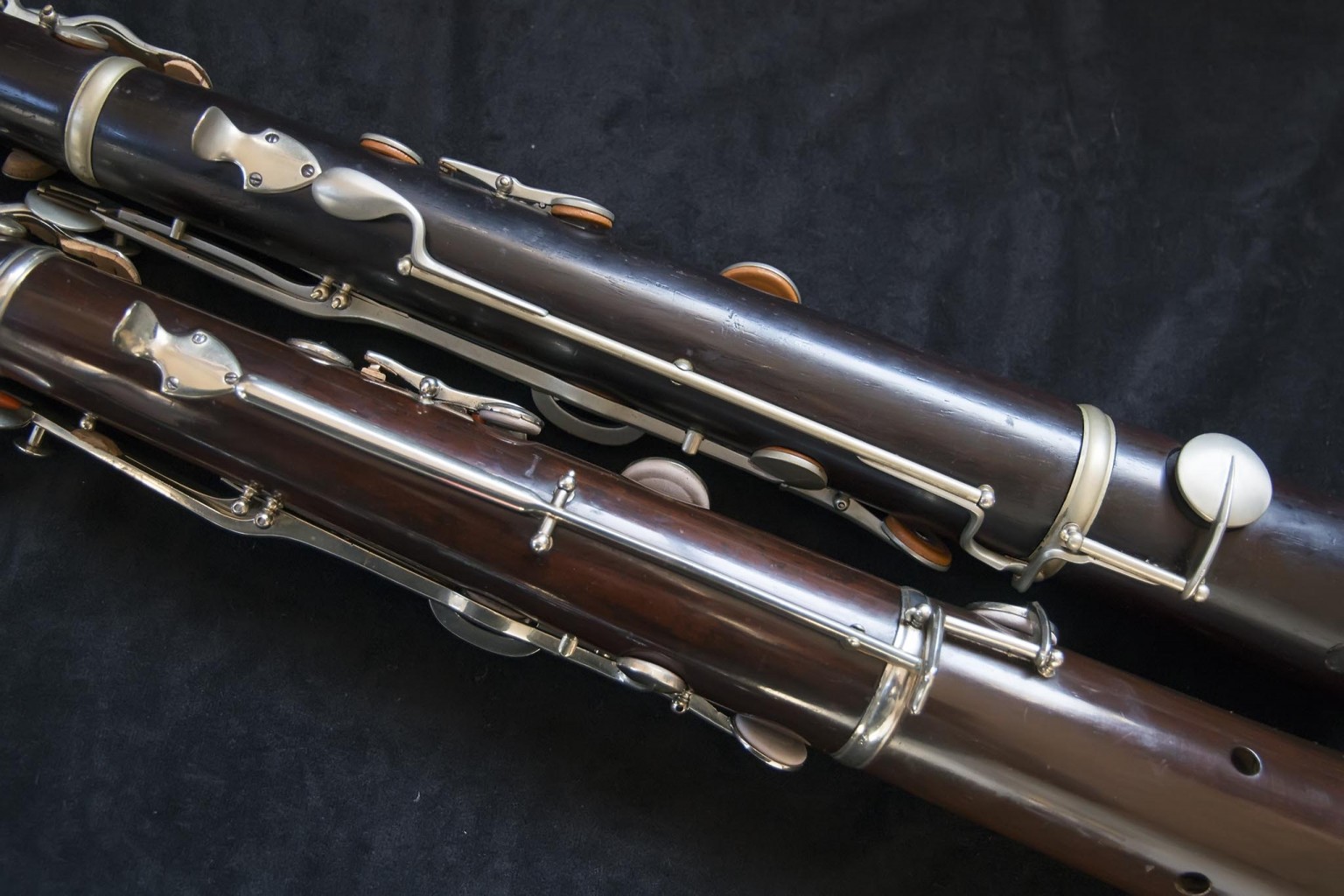 Another interesting thing is the long thumb Bb key. Most Stowassers have a side-throw key, as can be seen on the upper instrument. The long straight key with a very short perpendicular axle was the original style developed by Schunda and is still being used, but the side-throw key was Stowasser’s signature design, and has some advantages. This B natural instrument has the latest of the Stowasser keywork, so it is not an early model. I can only guess that this key design was requested for some reason by the client. I would love to know what options were available in those days…
Another interesting thing is the long thumb Bb key. Most Stowassers have a side-throw key, as can be seen on the upper instrument. The long straight key with a very short perpendicular axle was the original style developed by Schunda and is still being used, but the side-throw key was Stowasser’s signature design, and has some advantages. This B natural instrument has the latest of the Stowasser keywork, so it is not an early model. I can only guess that this key design was requested for some reason by the client. I would love to know what options were available in those days…
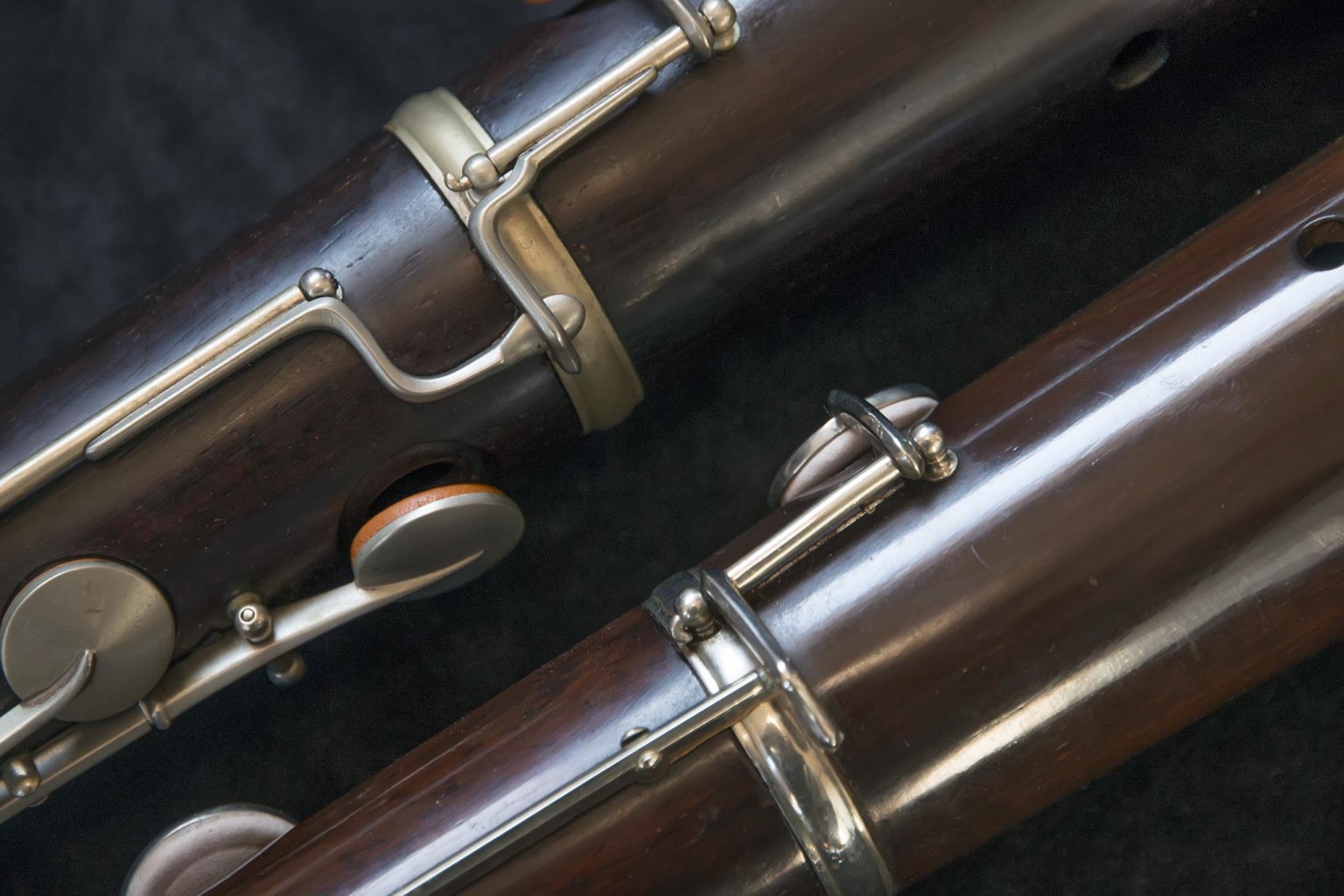
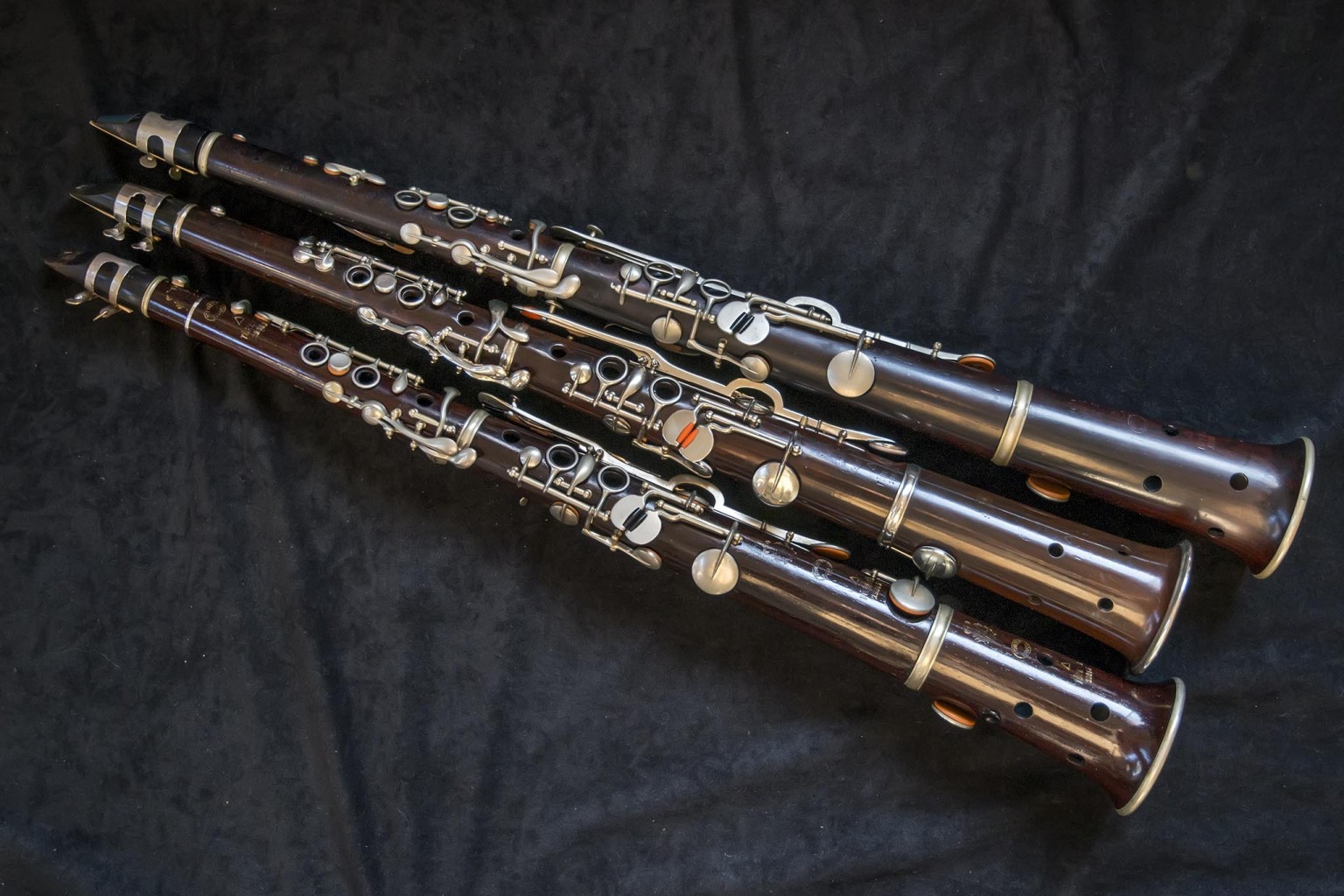
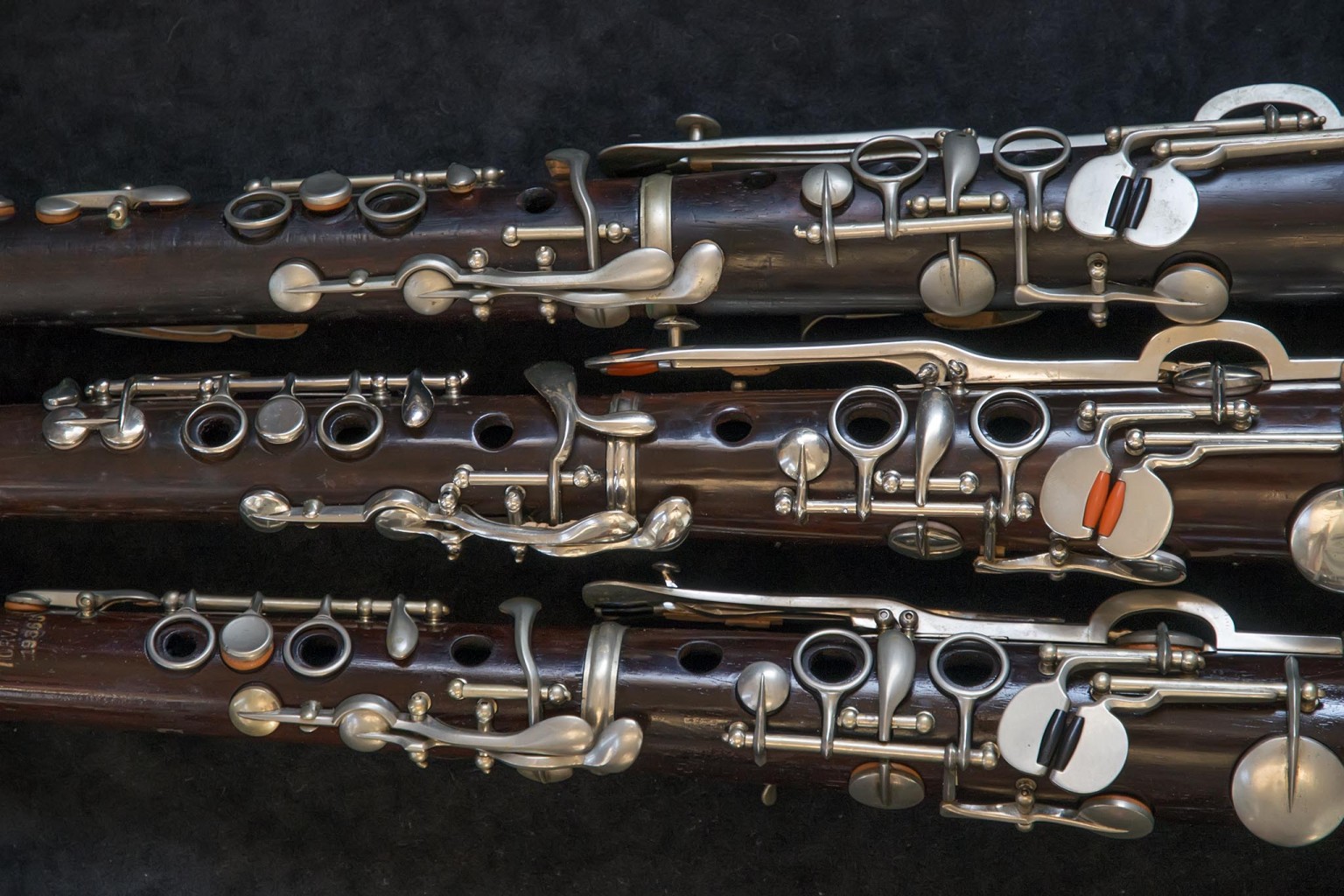
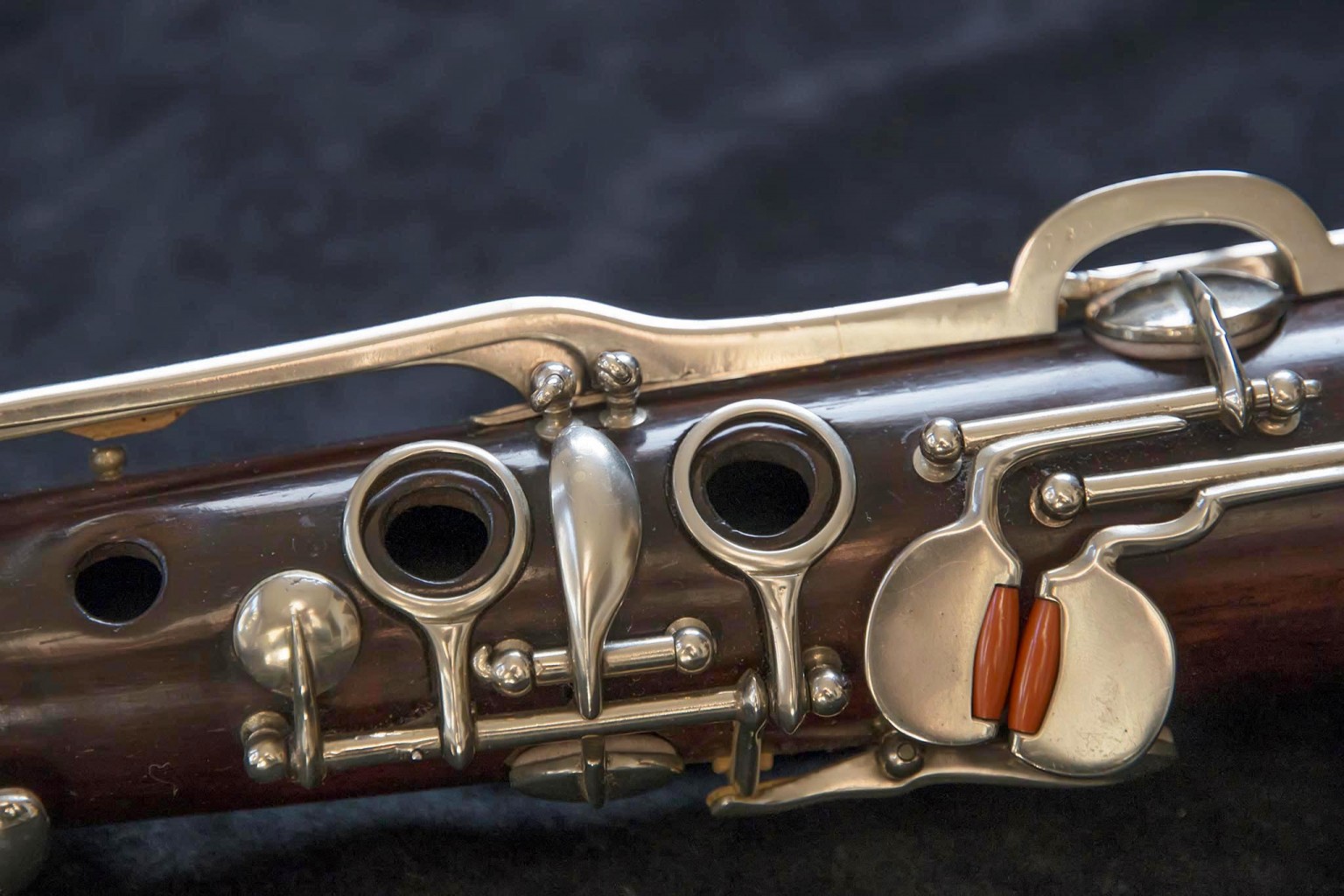
2018/01/01 @ 21:51
Thank you for your information. I’m a clarinrt player and i began to have interess in tarogato. Your information was importat for me. Thank you and best regards!
2019/08/13 @ 14:35
Hi is still available for sale?
2019/08/26 @ 03:31
Hi Marius–I’m not thinking of selling it at the moment
2022/01/03 @ 12:50
Hi . I’ts available for sale ?
2022/01/04 @ 01:09
Hi, not thinking to sell it at the moment
2022/12/24 @ 19:12
Hi,
I think I may have also found a “B” Tarogato. Can you tell me how long both of your instruments are without the top mouthpiece tenon? Thanks!
2023/01/18 @ 02:58
I am not at home. Will answer when I can.